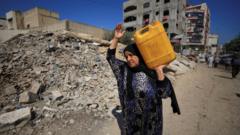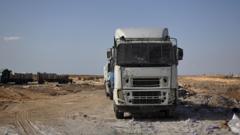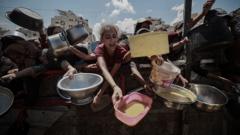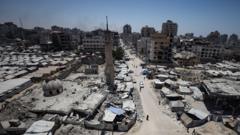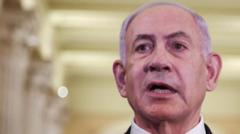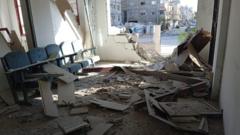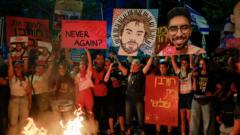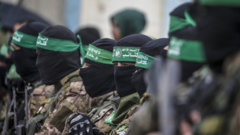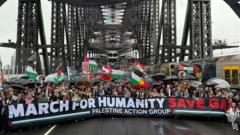Despite the ongoing conflict eroding its military and political power, Hamas has managed to pay its civil servants through a covert cash payment system. This article investigates the complexities and dangers of salary distribution amidst crippling economic conditions in Gaza.
Unveiling Hamas's Stealthy Salary Strategy Amid War
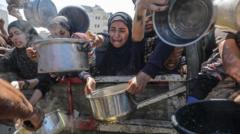
Unveiling Hamas's Stealthy Salary Strategy Amid War
As Gaza faces severe hardships, Hamas continues to utilize a clandestine cash-based salary system to sustain its civil servants.
After two years of conflict, Hamas grapples with diminished military strength and a political leadership facing immense stress. Nevertheless, the group has maintained a covert cash-based system to disburse salaries to approximately 30,000 civil servants, totaling around $7 million (£5.3 million). Reports from three civil servants confirm that they recently received nearly $300 each, amid ongoing tensions and a severe humanitarian crisis.
Employees have been receiving just over 20% of their pre-war salaries every ten weeks, triggering increasing frustration among those loyal to the group. The economic downturn, exacerbated by Israeli aid restrictions, has led to alarming food shortages and acute malnutrition across Gaza. Essential items, like flour, have soared to extraordinary prices, with a kilogram reaching $80—an unprecedented high.
The absence of a functional banking system in Gaza complicates salary distribution, which is perilous for many. Israel often targets the distributors of Hamas salaries in efforts to undermine the group's governance. Civil servants are alerted via encrypted messages on their personal devices or their spouses' phones, prompting them to meet at highly specific locations under the guise of casual interaction — often phrased as "meeting a friend for tea."
At these designated rendezvous points, an individual discreetly hands over a sealed envelope filled with cash before swiftly disappearing. One anonymous employee from the Hamas-run Ministry of Religious Affairs recounted the perilous journey of collecting his pay: "Every time I go to the distribution point, I bid farewell to my family, aware of the risks. I’ve narrowly avoided strikes aimed at these payout locations."
Another civil servant, identifying as Alaa for safety purposes, lamented the poor quality of the cash he received: “I received 1,000 shekels (around $300) in worn-out notes that no traders would accept. I’m left struggling to provide for my family of six, often searching for aid just to secure a meal.”
Events further unfolded dramatically in March when Israeli forces reportedly killed Ismail Barhoum, head of Hamas's financial sector, during an airstrike, an act they claim was aimed at severing financial support to the group’s military operations. The ongoing question remains about how Hamas continues salary payments amidst the devastation of its financial networks.
An insider from Hamas, under confidentiality, revealed that the organization had amassed an estimated $700 million in cash and substantial resources before the recent hostilities escalated. This financial stockpile is believed to have been managed by Hamas leaders Yahya Sinwar and his brother Mohammed, both of whom have since perished in Israeli operations.
In addition to previous revenue sources, including taxes and tariffs imposed on Gaza’s residents — coupled with support from Qatar — Hamas has adapted to the wartime economy by levying taxes on traders and dramatically inflating cigarette prices, with a box now costing more than $170.
While Hamas claims to provide food aid to its members through local emergency committees, public discontent is mounting as many Gazans accuse the group of favoring its base over the broader population. Claims have surfaced that Hamas intercepts and misappropriates relief supplies, a charge the organization refutes.
Nisreen Khaled, a widow caring for three children, expressed the heartbreak of watching her Hamas-supporting neighbors receive assistance while her family remains in dire straits: “Why did they not secure our food, water, and medicine before their October 7th offensive? They are part of our suffering.” This ongoing struggle continues in Gaza, creating frustration amid an already dire humanitarian situation.

